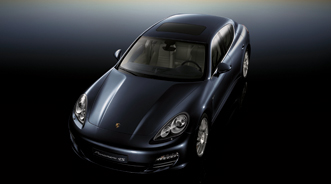Porsche Sees Strong Quarterly Strides in Profit, Revenue & Sales

Along with making a major investment into its research and development center, Porsche AG announced it posted significant gains in operating profit, revenue and sales during the first three months of the 2010 fiscal year.
In the quarter, the automaker generated an operating profit of 395 million euro, up from 52 million euro in the prior-year quarter.
Fueling that rise was an 86.4-percent spike in sales to 21,218 vehicles, but Porsche noted the prior-year quarter was relatively weak. The company’s revenue also soared higher, advancing 80.3 percent to 2.06 billion euro.
The company went on to offer a deeper sales performance breakdown by model.
Porsche enjoyed 151-percent growth in sales of the Cayenne as the automaker moved 10,292 units since the model hit the market in May.
The automaker gained a 94-percent spike in sales for the Panamera, selling 5,778 units.
“The main reason for this high growth rate is the fact that the Panamera was not available in all markets worldwide in the prior-year quarter, and the six-cylinder model was not delivered to the dealers until May,” Porsche officials explained.
Other units in Porsche’s lineup also posted sales gains during the quarter. The OEM saw a 20.4-percent increase in sales of the 911 as dealers moved 3,130 units. Officials also mentioned a 17.5-percent sales climb for the Boxster model series. The total of 2,018 units was composed of 1,089 Boxster vehicles and 929 Cayman vehicles.
Looking specifically at Europe, Porsche indicated sales in the first three months of the fiscal year rose by 63 percent to 7,082 vehicles. The German market constituted 2,318 units, a figure that was 50.1-percent stronger than a year ago.
The automaker pointed out it experienced even stronger growth in the Americas, where sales rose by 82 percent to 7,268 vehicles, with 6,632 units selling in North America.
In Asia and the rest of the world, Porsche determined sales grew by 126 percent to 6,868 vehicles. The company said this development was driven by strong growth in China.
In other quarterly analysis, the company noted that it manufactured 24,020 vehicles between August and October — 20 percent more than in the comparative prior-year period. In Leipzig, Germany, Porsche indicated 12,699 units of the Cayenne series were built, 55.6-percent more than in the prior-year quarter.
OEM officials went on to note a total of 4,870 vehicles were produced for the fourth model series, the Panamera, a figure that was down 6.4 percent. Elsewhere, they also mentioned there was a decline in production of the 911 model series at the Zuffenhausen, Germany, plant amounting to 7 percent. The number of 911 vehicles manufactured came to 3,902.
Furthermore, the company indicated production figures for the Boxster model series increased by 4.2 percent to 2,549 vehicles, including 1,364 Boxster and 1,185 Cayman models.
Because of sales growth, Porsche said it made additions to its work force. The company’s labor count stood at 13,043 as of Oct. 31, up from 12,722 employees on July 31.
“We can be satisfied with the key indicators of the first three months. Porsche AG is continuing on a profitable growth course,” stated Matthias Müller, chairman of the executive board of Porsche AG.
Lutz Meschke, member of Porsche AG’s executive board in charge of finance and procurement, shared a similar upbeat assessment.
“Also regarding the fiscal year, Porsche AG remains optimistic as a whole,” Meschke stressed.
“Due to the order intake worldwide in the past few months, we expect a good double-digit return on sales in the short fiscal year from August to December 2010,” he continued. “With this current order situation, we also anticipate a good start to the new fiscal year 2011.”
Porsche Invests in Weissach Development Center
In other company news, Porsche announced that it will extensively upgrade its research and development center in Weissach, Germany. The manufacturer is channeling approximately $200 million into a highly advanced wind tunnel, a state-of-the-art design center and an innovative electronics integration center.
The company believes the technology implemented in the new wind tunnel will also meet future requirements on vehicle development, which is increasingly focusing on energy efficiency.
“The new system will help us to maintain Porsche’s top position in the fields of aerodynamics and design and to further extend our lead. Outstanding design with optimal aerodynamic efficiency have always been classic Porsche strongholds,” explained Wolfgang Durheimer, Porsche AG board of management member for research and development.
The automaker went on to note the system will not only be used for Porsche’s internal developments, but will also be extensively available for Porsche customer development. Porsche contends the systems can offer direct access from the adjacent design studio and separate entrances for the discrete completion of customer development projects.
Above all, Porsche emphasized its investment will create a new studio to offer more space for the Porsche designers who are involved from the earliest concept phase of each vehicle development process. Due to extended tasks, the company stressed increased capacities are urgently required in the Weissach center of competence for sports car construction.
Sub-areas, which were previously scattered throughout several buildings at Porsche’s Weissach site, are set to be bundled into the future electronics integration center.
“This spatial proximity is a major advantage,” Durheimer said.
“The close interaction of our suppliers’ various electrical system/electronics experts and colleagues from related specialist fields during development will contribute significantly to the success of our work, particularly in the case of electronics, which now play a role in virtually every vehicle component,” he added.
Besides investing in systems and buildings, Porsche is also increasing its staffing levels. The company indicated about 100 engineers are to be recruited in the first stage alone.

 View The Latest Edition
View The Latest Edition

